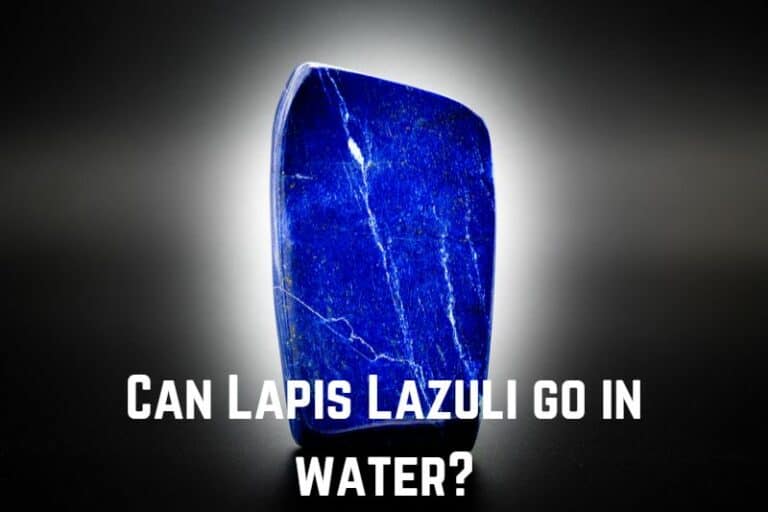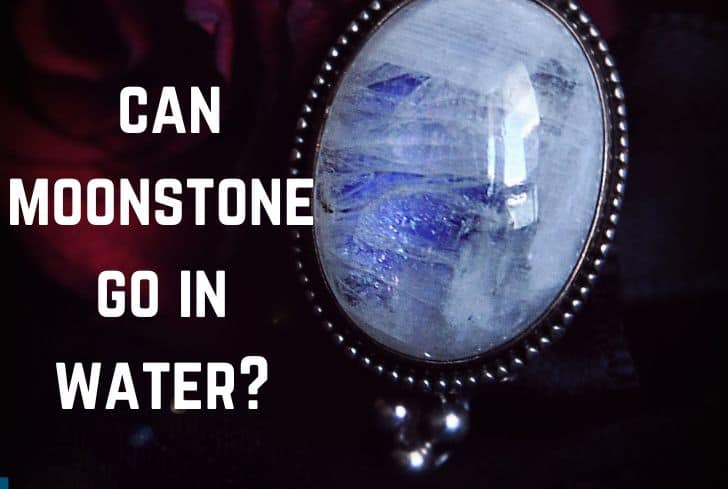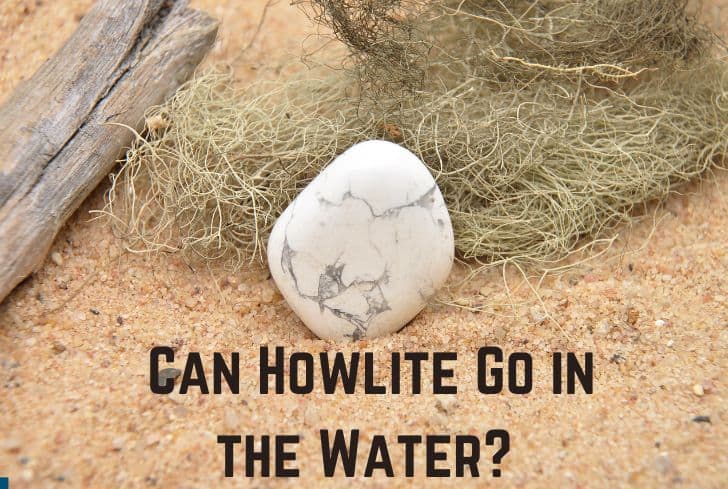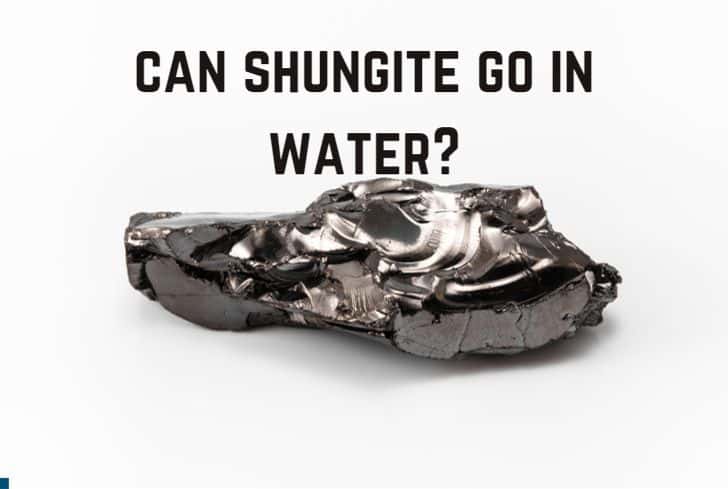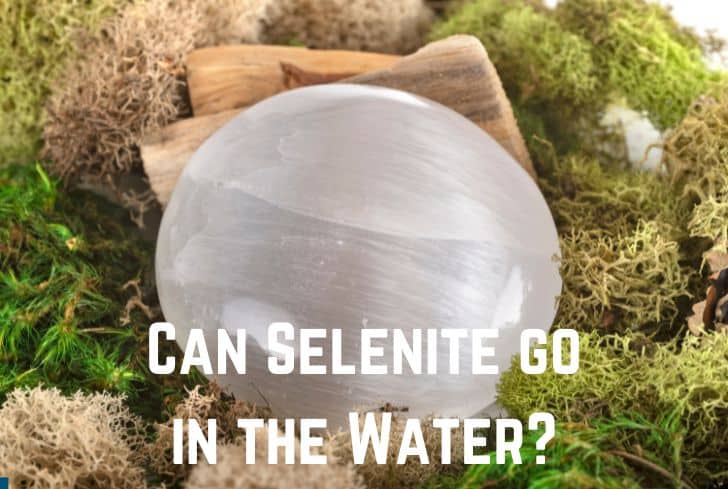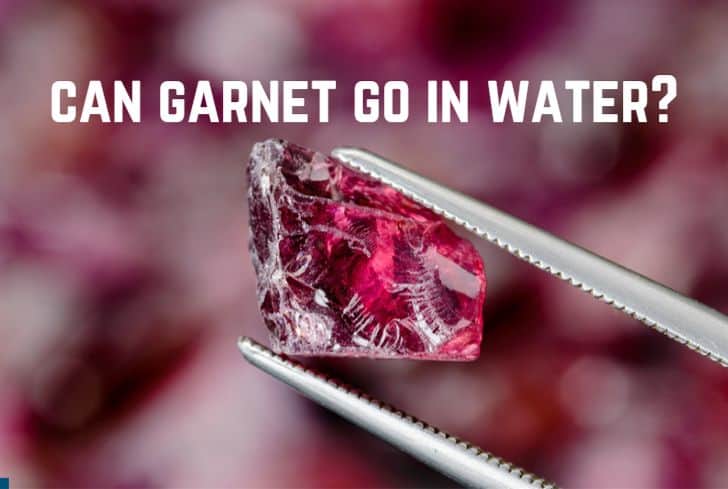Can Chrysocolla Go in the Water? (And in the Sun?)
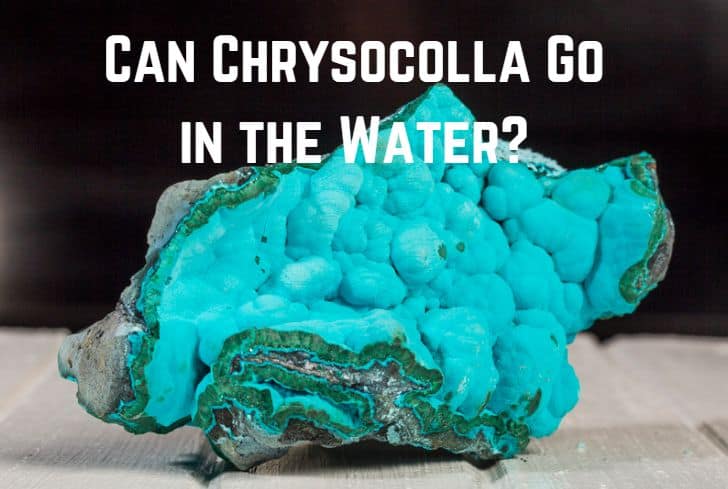
Chrysocolla is a hydrated copper silicate mineral and mineraloid. Since ancient times, it has been a popular gemstone for carvings and ornamental use. Chrysocolla gets its name from the Greek χρυσός (chrysos) and κολλα (kolla), “gold” and “glue,” a reference to a material used to solder gold.
Have you ever wondered if Chrysocolla can go in the water? In this article, we are going to discuss just that. We will begin with the properties of Chrysocolla. Then we will look at its interaction with
Read: Can Topaz go in Water?
Can Chrysocolla Get Wet?
Depending on its hardness, Chrysocolla may or may not be safe in the water. The stone has a wide range of hardness (2.5 to 7.0), which is partly below and partly above the minimum value required for minerals to be safe underwater. In any case, immersing stones under water for long periods is not good as they can get damaged.
Mohs Hardness Scale is the relative measure of a mineral’s resistance to scratching. Besides that, it also indicates a stone’s relationship with water. Usually, a value over 5.0 means that the stone is safe to go in the water.
Pure chrysocolla is very soft and not suitable for jewellery. Chrysocolla chalcedony is a highly silicified form of the mineral, which is much harder, with about 7.0 on the Mohs Scale. This is usually the variant used in jewellery and can be immersed in water for cleaning.
However, prolonged immersion is never good for minerals. Water enters the crevices of the stone and expands their cracks. These fissures can slowly damage the structure of the stone, making it brittle. This is especially worse for chrysocolla since it is already brittle.
Water also tarnishes the appearance of the stone. It can strip off the polish from the surface, making the stone look duller. So, it’s best to immerse a stone only for a short time.
Properties of Chrysocolla
These are the properties of chrysocolla:
- Appearance: Chrysocolla is mostly blue to blue-green, but its colour can range from blackish brown to even yellow in rare cases. Pure blue chrysocolla is often too soft but serves as an interesting ornament; blue to blue-green chrysocolla chalcedony is quite hard and is usually used in jewellery. It has a vitreous to dull lustre.
- Composition: Chrysocolla is a silicate mineral and mineraloid with the formula (Cu, Al)2H2Si2O5(OH)4•nH2O). A 2006 study questioned the composition of the mineral, suggesting that it might be a microscopic mixture of copper hydroxide spertiniite and chalcedony. The silica content determines the hardness of the stone, with a heavily-silicified form like chrysocolla chalcedony being great for jewellery.
- Structure: Chrysocolla’s crystal habit can vary from nodular to massive. It has an uneven fracture and does not have cleavage. The crystals are brittle, so they can break easily upon impact. In terms of diaphaneity, the crystals range from translucent to opaque.
- Hardness: The hardness of chrysocolla can range from 2.5 to 7.0, depending on the amount of silica incorporated in the stone during its formation. Usually, dark blue chrysocolla is too soft to be used for jewellery while other variants (cyan, green, blue-green) have a hardness of about 6.0, similar to turquoise. Chrysocolla chalcedony, formed in quartz deposits, has much more silica content and therefore a hardness of 7.0.
- Formation: Chrysocolla is of secondary origin, forming in the oxidation zones of copper ode bodies. It is usually found as botryoidal (having an external form composed of rounded segments) masses, crusts, or vein fillings. Chrysocolla’s associated minerals include quartz, azurite, malachite, and other copper minerals. There are also artificial simulants, such as dyed chalcedonies that resemble chrysocollas.
Besides these physical properties, chrysocolla is also believed to have several spiritual values. It is said to bring calmness and peace into life. The stone also guides you and increases your wisdom.
Can Chrysocolla go in the Sun?
Yes, chrysocolla can go in the sun. Keeping crystals out in the sun is a popular way of recharging them and it is perfectly safe for chrysocolla. Just make sure you do not leave it out for long.
You can keep chrysocolla in a place that gets direct sunlight or on a windowsill. The window’s glass will protect the stone from harmful UV rays.
Leave the stone for a few hours, and it will be recharged with the energies of the sun. You can also try keeping the stone out during the early morning hours when sunlight is gentle.
Can Chrysocolla go in Salt Water?
No, chrysocolla should not be put into salt water. Chrysocolla has a wide range of hardness (2.5 to 7.0), and the stones used in jewellery are usually safe to go in the water. However, prolonged immersion is always dangerous for crystals. When you bring salt into the mix, it makes the corrosive effect of water worse.
Salt, when dissolved in water, can enter the crevices of stones. These particles stay there even after the water evaporates, causing the cracks to expand. These fissures can slowly damage the structure of the stone.
Salt can also react adversely with the elements of the mineral, especially those containing iron. Saltwater hastens the rusting process by making the metal lose its ions more easily.
Can Chrysocolla go in Moonwater?
Chrysocolla has a wide range of hardness, from 2.5 to 7.0. The variants used to make gemstones are usually hard and can be cleaned using water. However, it is best not to expose them to water for other purposes, such as recharging with moon water.
Chrysocolla’s wide range of hardness makes it slightly difficult to take care of. Although gemstones are usually made with harder variants of chrysocolla, one can never be too sure of the specific composition of the stone.
Therefore, it is best not to immerse it in water unless necessary. You can try other methods to recharge your stone, such as leaving it directly under moonlight or smudging it with sage.
Does Chrysocolla Break Easily?
Yes, chrysocolla breaks easily. In terms of tenacity, it is quite brittle, so it can break easily upon impact. Moreover, chrysocolla also has a wide range of hardness (2.5 to 7), so some of its gemstones can be quite soft, making them prone to contact scratches too.
Tenacity is a mineral’s behaviour upon impact. Chrysocolla is a brittle mineral, meaning that it breaks/powders quite easily. So, make sure that you take proper care of your Chrysocolla stone.
Read: Can Garnet Go in the Water?
Do not wear it during physical activities like exercising or swimming. These can make it prone to impacts/prolonged immersion, which can cause damage to the stone. Also, given the stone’s low hardness, it is better to keep it separate from other gemstones; otherwise, it can get scratched.

Is Chrysocolla Magnetic?
Yes, chrysocolla can be magnetic. However, most gemstones made up of chrysocolla—such as chrysocolla chalcedony—have very low concentrations of it, so they are usually inert.
Chrysocolla chalcedony is a heavily silicified form of chrysocolla that forms in quartz deposits. Due to the high silica content, this crystal has a good level of hardness, making it usable in jewellery.
However, it has low concentrations of chrysocolla, so it is inert (diamagnetic). In other silica gems, a high level of chrysocolla inclusions can make the gem magnetic.
Is Chrysocolla a Rare Stone?
No, chrysocolla is not a rare stone. Due to its relatively greater availability, it is even used as a substitute for turquoise. Because of its abundance and beautiful blue-green colours, chrysocolla has been a popular gemstone since antiquity.
Turquoise is a blue-green mineral that is a hydrated phosphate of copper and aluminium. It is a rare stone, prized for its unique hue. Chrysocolla has a similar blue-green colour, and since it is much more common, it often serves as a replacement for turquoise.
Chrysocolla is easy to shape, making it ideal for silversmithing and goldsmithing. Check out this comprehensive video by Gemrock International to learn more about chrysocolla, especially the quality criteria and pricing.
How to Cleanse and Take Care of Chrysocolla?
Follow these steps to clean chrysocolla:
- Mix a soft detergent/soap with lukewarm water.
- Immerse chrysocolla in the solution and clean it with a soft brush.
- Rinse the stone under running water for a few minutes and remove all excess soap.
- Let it air dry. Ensure that you twist it a few times to get rid of all water.
Do not use mechanical cleaning methods such as steam or ultrasonic processes. Keep chrysocolla separate from other stones, as they can potentially scratch it.
Remember that Chrysocolla has a wide range of hardness, from 2.5 to 7.0. So, it’s best to consult a professional gem lab to ascertain the properties of your specific Chrysocolla and take care of it accordingly.
Read: Can Black Tourmaline Go in the Water?
Conclusion
In this article, we have looked at chrysocolla’s interaction with water. Chrysocolla has a wide range of hardness (2.5 to 7.0), but jewellery is usually made up of harder variants, which have a hardness similar to turquoise (6.0). So, in general, chrysocolla is safe to go in the water for a short period. We looked at the stone’s interaction with other elements and finally learnt how to take care of it.

